The Corsair RM1000x and RM1000i 1000W Power Supply Review
by E. Fylladitakis on September 30, 2015 8:00 AM EST- Posted in
- Cases/Cooling/PSUs
- Corsair
- RM Series
- Corsair Link
Hot Test Results
Moving on to our hot test results, as the following tables show, the power quality of the RM1000i/RM1000x is significantly upgraded in comparison with the original RM1000. The maximum voltage ripple on the 12V line is now 28 mV, less than half that of the previous model and four times below the 120 mV design limit. Similar performance improvements can be seen on the minor voltage rails as well, with the maximum ripple of the 3.3V and 5V lines being 10 mV and 20 mV respectively. Voltage regulation is greatly improved too, as the RM1000i/RM1000x maintain all of their voltage lines within about 1% across the entire nominal load range. In comparison, the voltage regulation of the RM1000 was between 2% and 3%.
| Main Output | ||||||||
| Load (Watts) | 202.31 W | 503.64 W | 752.79 W | 1000.53 W | ||||
| Load (Percent) | 20.23% | 50.36% | 75.28% | 100.05% | ||||
| Amperes | Volts | Amperes | Volts | Amperes | Volts | Amperes | Volts | |
| 3.3 V | 2.27 | 3.37 | 5.66 | 3.36 | 8.5 | 3.34 | 11.33 | 3.33 |
| 5 V | 2.27 | 5.13 | 5.66 | 5.12 | 8.5 | 5.09 | 11.33 | 5.08 |
| 12 V | 15.1 | 12.12 | 37.75 | 12.07 | 56.62 | 12.03 | 75.5 | 11.99 |
| Line | Regulation (20% to 100% load) |
Voltage Ripple (mV) | |||||
| 20% Load | 50% Load | 75% Load | 100% Load | CL1 12V |
CL2 3.3V + 5V |
||
| 3.3V | 0.95% | 6 | 6 | 8 | 10 | 8 | 16 |
| 5V | 0.8% | 8 | 12 | 16 | 20 | 12 | 22 |
| 12V | 1.05% | 12 | 16 | 22 | 28 | 26 | 14 |
The electrical performance of the RM1000i/RM1000x seems largely unaffected by the high ambient temperature. This is not unexpected from PSUs rated at 50°C and designed capable to operate without a fan. The average efficiency drop across the entire load range is 0.5%, evenly distributed across it. Technically, the RM1000i/RM1000x meet the 80Plus Gold certification limits even with ambient temperatures greater than 45°C.
Inside our hotbox, the fan began spinning as soon as the load reached 400 Watts. Still, the fan did not further speed up until the load exceeded 700 Watts, and beyond that the maximum speed did not go much higher than what we saw in our our room temperature testing, maintaining very low sound pressure levels. The internal temperatures remain relatively low, considering the high ambient temperatures, and are noticeably lower than the original RM1000 as well. However, we should mention that the original RM1000 had slightly lower noise figures under maximum load, indicating that the cooling profile of the newer RM1000i/RM1000x units is a little more aggressive.


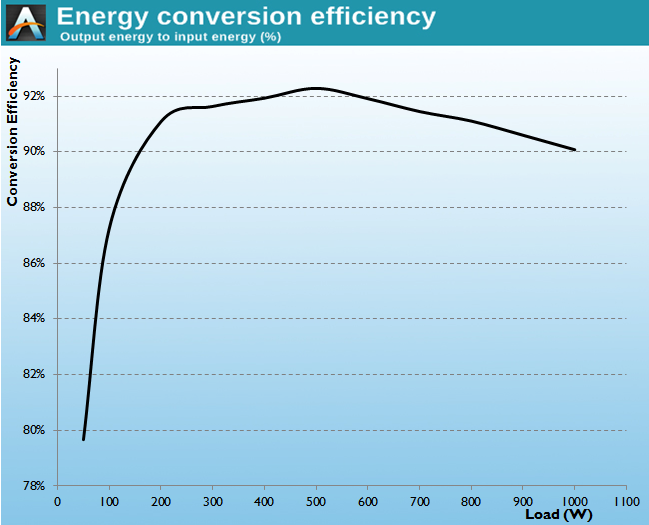
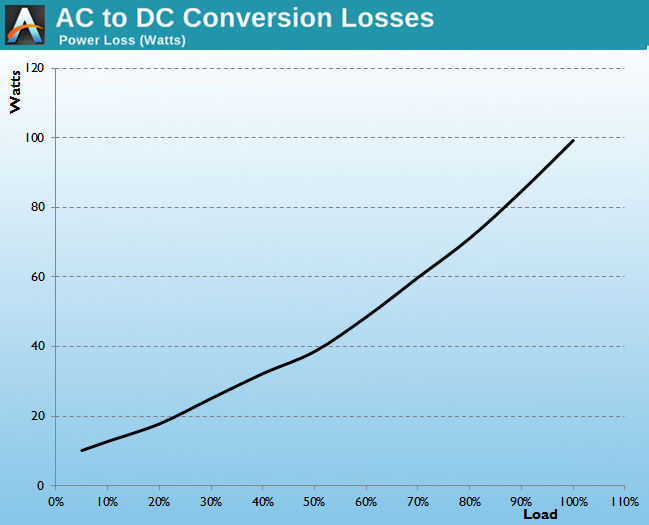
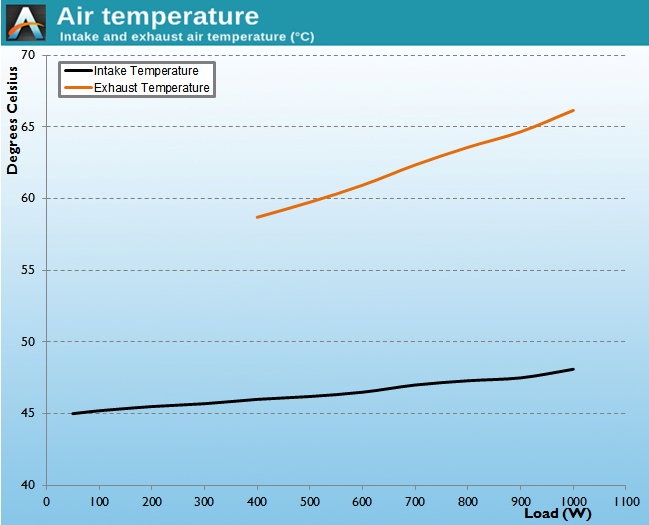
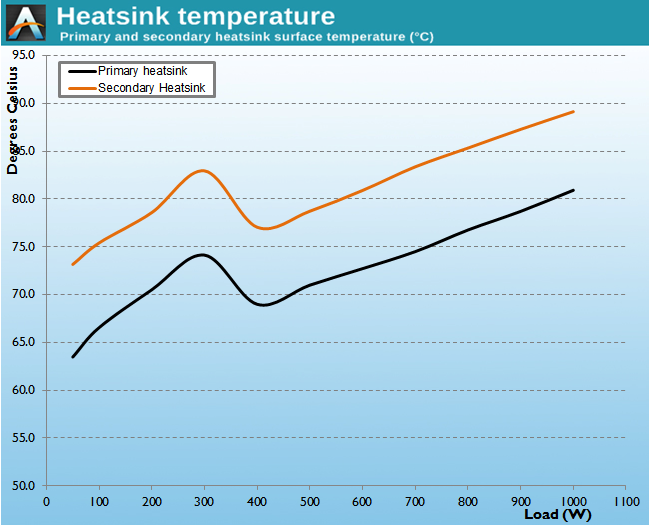
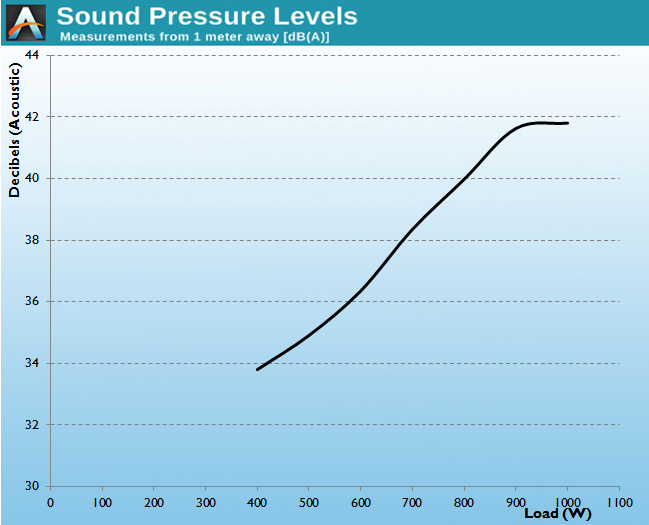








47 Comments
View All Comments
HOOfan 1 - Wednesday, September 30, 2015 - link
Looks like you may have been getting 80 Plus Platinum efficiency from itHOOfan 1 - Wednesday, September 30, 2015 - link
Nevermind, I see you were using a 230V input, but it still exceeded 80 Plus Gold by a decent amountBearmann - Wednesday, September 30, 2015 - link
Excellent review! Noted a couple of typo's in the board layout discussion. Regarding the capacitors, I think you meant "whopping". I'm sure you meant to say "coil whine" within the quotes.E.Fyll - Wednesday, September 30, 2015 - link
Thank you Bearmann. The spellchecker/auto-correct are not as smart as they should be sometimes. :)Cow86 - Wednesday, September 30, 2015 - link
There is another difference between the RMi and RMx series that the author is apparently unaware of: The RMi series uses a Fluid Dynamic Bearing fan, whilst the RMx series uses a Rifle Bearing fan, same as the RM series. The latter is supposed to not last as long, and also potentially be a little noisier. The difference is marginal though, so I think it's still very much justified to buy the RMx series if you don't need the Corsair Link. I'll definitely be looking at it for my next build :)E.Fyll - Wednesday, September 30, 2015 - link
Although the "reviewer's guide" that I received says so as well, both of the units that I received had an NR135P fan installed. Perhaps the fan of the lower wattage models is different or Corsair ran out of NR135L's while making our samples. :)Cow86 - Wednesday, September 30, 2015 - link
Seems strange, as the FDB fan would be superior normally, so if they're saying it has it, and it then doesn't, that seems like false advertising even to me. I mean, it's not huge, but getting a different (and potentially inferior) fan to what you're supposed to be getting is not cool. Maybe all the production models have the FDB fan (the NR135L I guess) though in the RMi series...I'd hope so.Oxford Guy - Wednesday, September 30, 2015 - link
Actually it is huge. FDB fans should never be advertised and then switched out for crappier fans. Ever.Cow86 - Wednesday, September 30, 2015 - link
You're right, and having thought about it a little more I feel more strongly about it now too. This is false advertising if these are making it to customers like this. You're paying a premium for Corsair Link AND the longer lasting FDB fan, so it should damn well have it. @E.Fyll: Any chance of a follow-up with Corsair on that?jonnyGURU - Wednesday, September 30, 2015 - link
The RMi shouldn't have had a rifle bearing fan. Let me see what happened there.